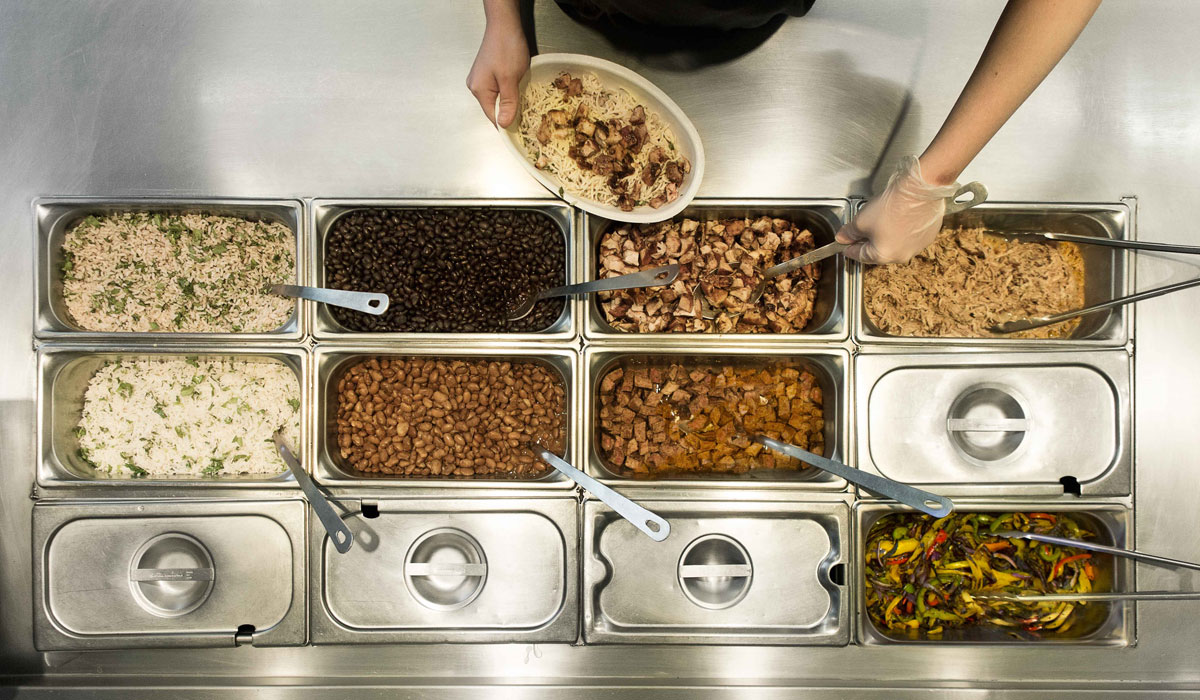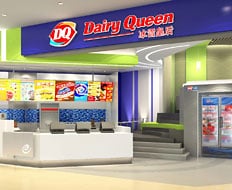When the recession hit in 2008, quick serves in the U.S. got a wake-up call: Even in the Western world, where drive thrus and combo meals were invented, quick serves are not immune to tight wallets and budget cuts.
While brands in the U.S. struggled, some had a saving grace: an international presence. Take Dairy Queen, for instance. Since the brand is still in expansion mode in China, the economic slowdown didn’t affect sales there the way it did in the U.S.
“We’re still kind of riding on that growth spurt,” says Brad Houser, executive vice president of international for Dairy Queen.
Of course, taking a concept overseas is easier said than done. That’s why QSR spoke with three brands with varied plans for international expansion to see the different challenges—and opportunities—quick serves can expect to find along the way.
Marco’s: Caribbean Vocations
Jack Butorac, CEO of Marco’s Pizza, had no plans to expand the brand internationally. In fact, when executive vice president of operations Dave Black walked into Butorac’s office and said Marco’s needed to expand into the Bahamas, Butorac said no.
“I said, ‘That’s international, and it’s something I have no interest in doing,’” Butorac says.
But Black walked into Butorac’s office the next day, and the day after that. Every day for three weeks, the message was the same: Marco’s needed to go to the Bahamas. Finally, Butorac listened.
Marco’s opened its first store in the Bahamas in November and has plans to open 30 more locations throughout the Caribbean in the next seven years.
A pair of restaurant owners from the area were what finally changed Butorac’s mind. Chris and Terry Tsavoussis—a pair of standout Domino’s franchisees more than 10 years ago, when Black was president of the company—approached him because they wanted to get back into the pizza business. They still owned numerous Wendy’s in the Bahamas, and when they were Domino’s franchisees, their stores regularly outperformed.
“When I had the opportunity to meet Terry and Chris, it was a good marriage,” Butorac says. “They just understand how to operate in the Caribbean. … That’s why I did it.”
But the pair had to promise they would provide their fair share of marital bliss. Although Marco’s granted them the right to most of the royalties because they’re doing the heavy lifting (domestically, the company gets most of any given store’s royalties), they had to agree to at least 31 stores in the Caribbean to make it worth Marcos’ while.
Arriving at that number wasn’t easy. In the U.S., Marco’s uses a system called MapInfo to consider several factors and strategically determine how many stores to open in a given market. No such data was available for the Caribbean.
“Instead, we looked at the number of direct competitors, and agreed on a number of stores that we felt could be built in that area,” Butorac says.
Site selection proved similarly difficult.
“They don’t have any demographics there,” Butorac says. “What I’m relying on is their expertise. They grew up there … and they understand who the customers are.”
Chris and Terry also knew that Marco’s stores in the Caribbean would experience significantly higher volume because many locals have two or three jobs and no time to cook. They tweaked the store’s design in several ways to accommodate the increased business.
“They added triple the number of phone lines coming in for delivery orders,” Butorac says. They also added an extra table for boxing pizzas, which quickly came in handy.
“They’ve beaten our sales record we had for a store by three times,” Butorac says. “The volume has been so far beyond what we expected, so we’re changing and making it more phone lines for the next store.” Plans for future locations in the market also include two preparation tables and a triple-decker oven instead of a double-decker.
In addition to the huge jump in volume, Marco’s was presented with another major challenge when it moved into the Caribbean.
“You go to deliver, and they don’t have house numbers,” Butorac says. “A lot of the streets don’t have names.”
Luckily, Chris and Terry had already dealt with delivery issues in their Domino’s days. Instead of giving their address, customers would give directions for how to get to their home from the store based on landmarks along the way.
Chris and Terry’s experience also came in handy when it came to the supply chain.
“They have their own warehouse where they store all the ingredients for both concepts [Marco’s and Wendy’s],” Butorac says. “It’s like they have their own Sysco.”
[pagebreak]
But while Chris and Terry might have changed Marco’s operations slightly for functional purposes, the look and menu give people in the Caribbean the experience that customers in the U.S. have grown accustomed to.
“When they opened, we sent over a number of people,” Butorac says. “We spent a lot of time and effort to make sure we delivered a consistent product.”
Since the initial store in the Bahamas opened, people from Puerto Rico and Jamaica have approached Chris and Terry, wanting to open their own Marco’s stores.
While Butorac hasn’t signed deals with any of them yet, he knows to at least consider their offers.
“If you were to talk to me 18 months ago and said, ‘International,’ I’d say, ‘Sorry,’” he says. “It was not part of my thought process, and it now needs to be part of my thought process.”
Chipotle: London Calling
Chipotle’s first store opened in Denver in 1993, and the chain has grown to more than 900 stores in the U.S. and one in Toronto since then. The fast-casual concept found booming success in the U.S., meeting its sales and expansion goals even in the throes of a recession. Yet in many ways, the chain seems better suited for Europe.
“There’s a great appreciation there for local and sustainably raised ingredients,” says Chris Arnold, spokesman for Chipotle, which prides itself on serving what it calls “food with integrity.” “Culturally, that aligns with what we do more than most options here in the U.S. do.”
So when Chipotle opens its first London store as early as April, it will follow the same model it does in the U.S. In fact, almost everything about the brand—from its grassroots marketing efforts to its streamlined menu to its assembly line operations—will remain unchanged in the London store.
“We really don’t see why it needs to be any different going into Europe,” Arnold says. “It will all be the same. Part of the beauty of Chipotle is its simplicity.”
Arnold says London was chosen as the site for Chipotle’s first European store because it’s similar to the locations where the brand first thrived.
“When we started in the U.S., we’ve primarily been in large cities,” he says. “Almost all of our restaurants are in major metropolitan areas or suburbs of major metropolitan areas.”
From the start, Chipotle’s London store will focus on fostering management potential in its employees. Some management and operations personnel from within the company will travel to London to help with the opening and teach new staff Chipotle’s recipes, cooking methods, and operations. After an initial period, at least one person from Chipotle U.S. will stay in a leadership position at the London store, but the brand will start looking for employees who could take on management roles at that store and others.
“More than 80 percent of all of our restaurant management positions are filled internally from internal promotions—we like to do it that way,” Arnold says. “We’ll be doing the same thing in Europe, developing people and moving them on to manage other restaurants as we continue to build.”
Chipotle has no definite plans for future restaurants in London and beyond.
“We have no other spaces in lease in Europe right now and no construction under schedule,” Arnold says. “It’s never been our intention just to stamp a bunch of restaurants around the community or around the world.”
But that doesn’t mean the company isn’t interested in future opportunities abroad. It has already started to consider opening more locations in London, Paris, and Munich.
“Our vision as a company is to change the way people think about and eat fast food,” Arnold says. “That’s something that the traditional fast-food guys aren’t doing. We think there’s certainly room for us to build that niche in other countries as well as the U.S., and there’s a business opportunity for us to continue to grow.”
[pagebreak]
At the London store and other potential international locations, the usual challenge for Chipotle—finding a way to locally source food—shouldn’t be much of a challenge at all, Arnold says.
“We do as much of that as we can in the U.S.,” Arnold says. “In Europe we think that’s going to be more feasible to do based on the way the European food culture is.”
Some food issues, such as getting tortillas made to Chipotle’s recipe, weren’t as easily solved. After working for several months, Arnold says Chipotle is comfortable with how the menu item is progressing.
Despite Chipotle’s plan to follow its existing model at the London store, there will be one change.
“We’re in the process of developing new packaging that has new copy on it,” Arnold says. Words such as flavor will be substituted with the Queens English spelling (“flavour”) on the updated package copy.
Dairy Queen: Now Made in China
In the U.S. and Canada, Dairy Queen appeals to a demographic who remembers growing up on the company’s cones and sundaes. But in Shanghai and Beijing, DQ is “the Starbucks of ice cream,” says Brad Houser, executive vice president of international Dairy Queen.
“Although it’s sort of a senior citizen of brands here in the U.S. and Canada, it’s really kind of neat to see it in China where it’s that cool brand young kids actually hang out at,” Houser says.
Of the three quick serves QSR interviewed for this article, Dairy Queen is the most veteran in the international expansion game. It has about 640 stores in 16 countries outside of the U.S. and Canada, and the company opened its first China location in Beijing in the ’90s.
“This year, we will probably hit around 360–370 stores in China,” Houser says. “The goal is to hopefully be close to 500 stores by the end of 2011.”
Although it’s an ambitious objective, Houser says it’s a reasonable one.
“The good thing in China is that you can sign a deal one month and have the store open the next month,” he says. “The construction and timeline to get things going is a lot shorter than it is domestically.”
Because of different labor laws and a culturally instilled work ethic that has citizens working round the clock, Houser says franchisees have been known to go from signing the paperwork to opening in as little as three weeks. Sometimes the company will open 15 to 20 Chinese locations in a single month.
“If they’re focused, they get things done,” Houser says.
Dairy Queen can also develop quickly because it doesn’t have the strict site-selection requirements that some chains do.
“Developers and landlords usually like working with us because there isn’t really a formula to the layout,” Houser says.
But while its stores have varied layouts, they all have the same ambiance—which is nothing like what customers find in its U.S. locations.
Once Dairy Queen realized young customers wanted to spend more time in stores hanging out with friends or surfing the Web, they adjusted the decor to lend a more modern feel.
“It’s less sort of that tables-and-chairs setup and more casual, contemporary seating,” Houser says.
Dairy Queen also modified its menu to include Asian-friendly flavor profiles such as green tea and jasmine tea ice creams.
“You want to ensure that you are that global brand and you’re adapting to the local taste, but you don’t want to go too far down the line where you’re that local brand itself,” Houser says. “We maintain the consistency of key products on the menu and then adapt from those to the local tastes.”
For example, Dairy Queens worldwide offer the same soft-serve options and chocolate and strawberry toppings—and the Oreo blizzard is the top-selling blizzard in the world.
The sizes offered also were tweaked in Asia because of cultural preferences.
“The portions are a little smaller because Chinese consumers don’t eat as much and it has to be affordable,” Houser says.
But while Dairy Queen started to offer burgers and fries in Thailand, it plans on selling only ice cream at its Chinese stores.
“In the rest of the world, we’re primarily known for our treats menu,” Houser says.




